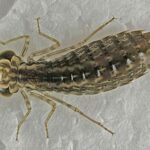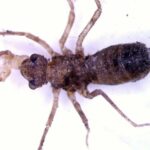By Liz Neroni, Naturalist

With spring comes field trip season for many organizations, including Preservation Parks. However, due to Covid, we won’t be having any. Part of me is relieved. If anyone has hosted 100 2nd graders plus teachers and parents, there is an understanding of why I say that. We rotate the classes through different activities from the second they arrive to the moment we wave goodbye as the busses exit the drive. Presenting the same program 4-5 times in a row with no breaks, turns you into zombie for the rest of the day. It’s exhausting.
The other part of me, however, is sad. Even though it’s a lot of work, I was usually in charge of our wetland study. After explaining that nets aren’t weapons or toys and are instead, tools for scientific use, they head down the boardwalks, to a strange new world. I task them with dipping their nets into the water to try and find as many things as they can. I also ask them to listen and look around the wetland, counting as they go. Shouts of excitement, screams of fright, unsure rumbles, and audible wows fill the wetland. It brings a smile to my face every time.
It is my favorite when one of the students looks discouraged and says, “ I haven’t caught a thing….” As awful as that sounds, it is worth the outcome. With a little encouragement and background knowledge, I take the net and say, “Oh my! You have my favorite wetland animal right in your net!”
Disbelief is replaced with sheer joy, as I pull whatever unnoticed macro-invertebrate is crawling around. Each one is my favorite. Each one has a story to tell and a role within the eco-system. Yet, if I had to pick by the kids’ reactions, I’d choose the dragonfly nymph.

It wasn’t until after I started my career as a naturalist in western Maryland, that I learned dragonflies started their incomplete metamorphosis in the water. To think, the familiar insect darting through the air, lives underwater in the beginning. The students always seem so shocked, but then I show them the nymph’s cool mouth. I explain how throughout its life, the dragonfly is an extremely good hunter. At this stage, their specialized mouth is what allows them to catch their prey so well. Neatly folded under the body when not in use, it springs forward to snatch nearby food. This special mouth is called a labium. If you haven’t seen it in action before, visit YouTube and search for “dragonfly labium” to see some cool videos.
One day soon, our wetlands won’t just be a biodiverse and vital habitat, it will be a place for young minds and hearts to, once again, connect with nature.
Photo credit:
Dragonfly Nymph Labium shown
By Jason R Eckberg
Las Vegas, NV USA
Creative Commons License
https://bugguide.net/node/view/1782651







